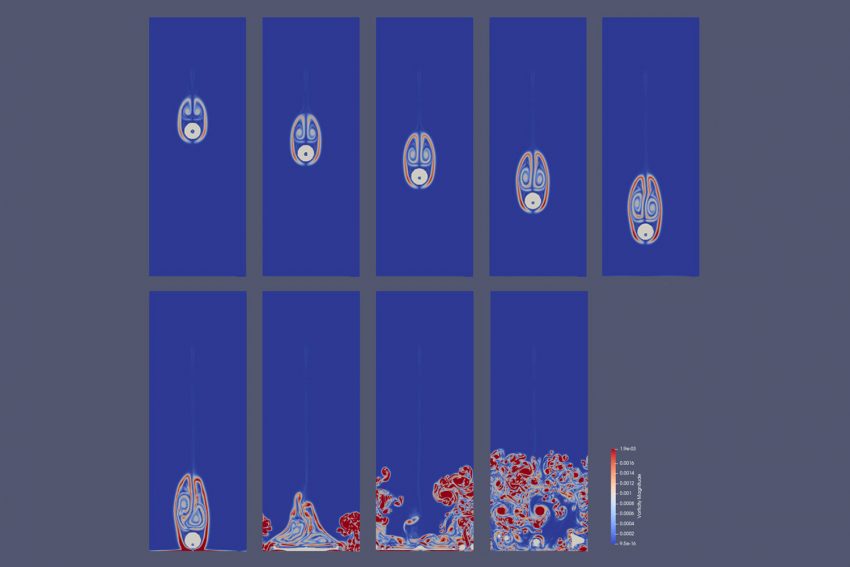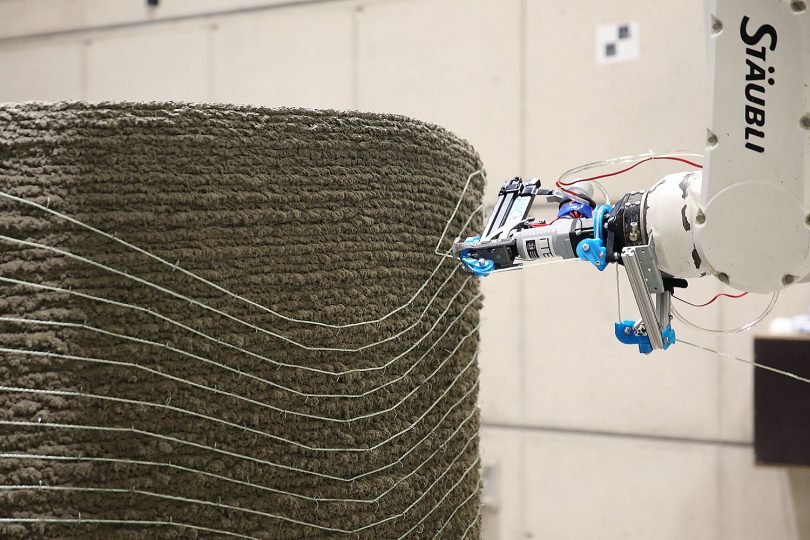Picture of the month: A good drop of science Model simulations at the Institute for Computational Modeling in Civil Engineering (IRMB)
“Research in the process of becoming” – this is how professor Martin Geier describes his picture of the month. It shows an intermediate step on the way to a physically correct simulation of a falling concrete drop. The simulation should help to understand the behaviour of fluids with large density differences. This understanding can later be used to increase the stability of shotcrete structures. On the way to this goal, professor Geier’s team is still working on parameters such as viscosity and surface tension to adapt the simulation to real conditions.
Sometimes it’s small details that have an impact on the big picture – for example, how much air is trapped by the concrete droplets when shotcrete is applied. Too much air in the concrete ultimately reduces the load-bearing capacity of the concrete structure. The decisive factor here is the kinetic energy of the concrete jet. The drops in the centre of the concrete jet hit the substrate at a higher speed than the drops at the edge of the jet. But where the jet ultimately traps a lot of air and where it traps little also depends on other factors. “In addition to the kinetic energy and speed with which the concrete drops hit the ground, the turbulence of the air influences the entrapment and thus the stability of buildings constructed in this way,” explains professor Martin Geier, head of the sub-project “Modelling and Simulation of Shotcrete 3D Printing” at the Institute for Computational Modeling in Civil Engineering (IRMB).
In order to understand the air turbulence around the concrete droplets, the IRMB is developing a method as part of the Collaborative Research Center/Transregio 277 “Additive Manufacturing in Construction” that should make it possible to efficiently simulate turbulent multiphase flows with large density differences between the phases – i.e. the droplet and the air surrounding it. Our picture of the month shows an early attempt at simulation. The vorticity, the strength of the vortices in the air, is highlighted in colour. “This is a very complex process that we have to map,” says Geier. “Concrete weighs over two tonnes and air only one kilogram per cubic metre. This difference in density is a challenge in the modelling. That’s why we focus mainly on density in the simulation in this phase of the project. We test this parameter range and see how far we get with it. Only afterwards do we adjust all the other variables to real conditions.”
The picture of the month is a good opportunity to show research in the process and to report transparently on the approach and progress of the research project.


